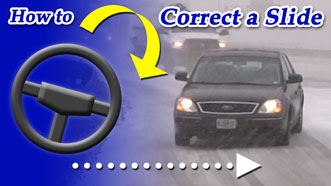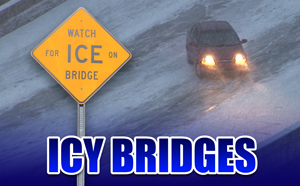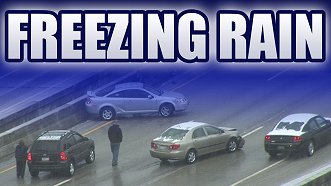Icy Roads: How to Correct a Slide
If you're sliding and fishtailing at all, it means that you are going too fast for the conditions. If you drive at a safe speed on ice and snow (45mph / 70km/h or less) and avoid sudden braking, acceleration or turns, you won't need to worry about correcting anything - a much better outcome. The higher the speed, the more difficult it is to correct a slide. Most slides or fishtails that happen above 45mph (70km/h) require very quick and precise steering to correct, and are beyond the ability of most drivers to successfully manage.
While oversteer and understeer are both types of slides that can happen on icy roads (watch this video to see animations of both slide types), it is oversteer that is the cause of most accidents. In this article, we will be focusing on oversteer slide correction.
There are three points to remember about oversteer slide correction.
- Don't hit your brakes: Braking triggers slides and makes existing slides worse!
- Turn into the slide: Turn your wheels in the direction the back of the vehicle is sliding.
- Don't panic and don't overcorrect: Overcorrecting may send the car into an unrecoverable spin.
Let's look at these three points in detail: 1: Don't use your brakes.

2: Turn into the slide
Turn your front wheels in the same direction that the rear of the vehicle is sliding. You've also heard about "turning into the slide". These both mean the same thing. For example, if the back of your car slides to the right, turn the wheel to the right. As the car straightens out, straighten the steering wheel. Watch this video for visual examples.

It's helpful to keep your eyes focused on where you want the car to go - that is, on the road ahead. The amount you'll need to turn the wheel is proportional to how far and how fast the back of your car is sliding. A small slide will only require a slight steering motion.
What often makes correcting slide so difficult is that once your car begins to respond to you turning the wheel, it will often snap back in the other direction. When you're in the process of correcting a slide in one direction, be prepared for the car to swing back in the opposite direction. This oscillation can happen several times, and you'll need to respond accordingly. 3: Don't panic and don't overcorrect
An oversteer slide gives the car angular momentum, which means it will want to keep rotating into a full spin. Overcorrecting can send the car rotating faster than a steering can counter, and the car will spin out.
Video: Correcting a slide
Educational Winter Driving Videos - Watch for Free:
  
Home | Risk | Stats | Accident Video | Icy Bridges | Tips | Warning Signs | If You Slide | If You Wreck
1,836
Average annual
deaths in the US
from icy roads
136,309
Average annual
injuries in the US
from icy roads
[ More Statistics ]
|
|

